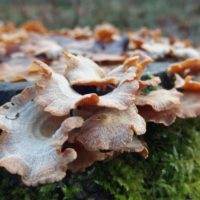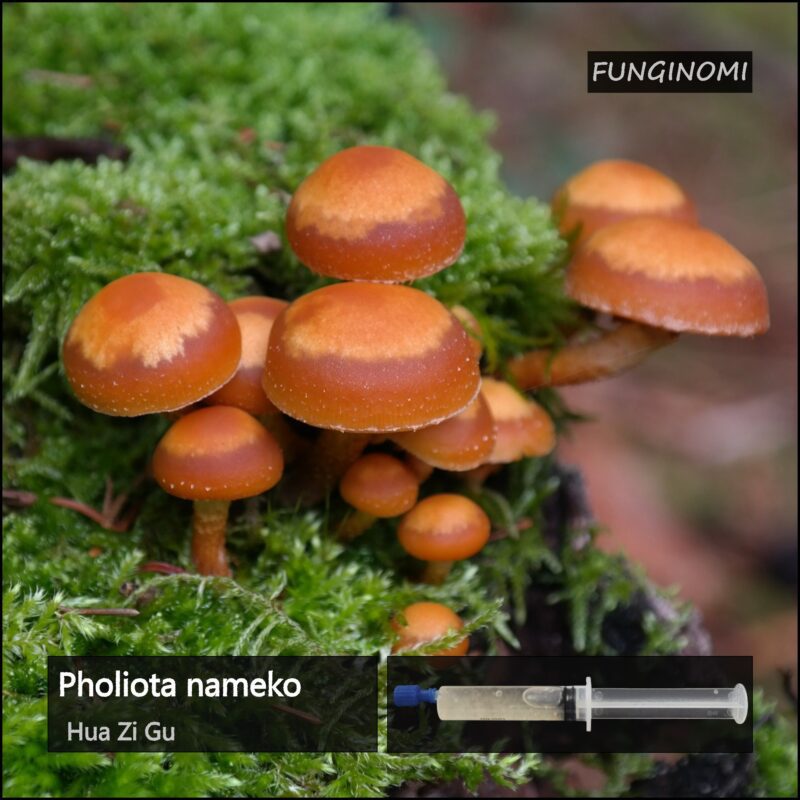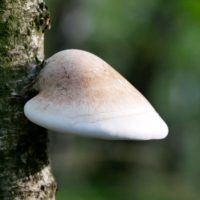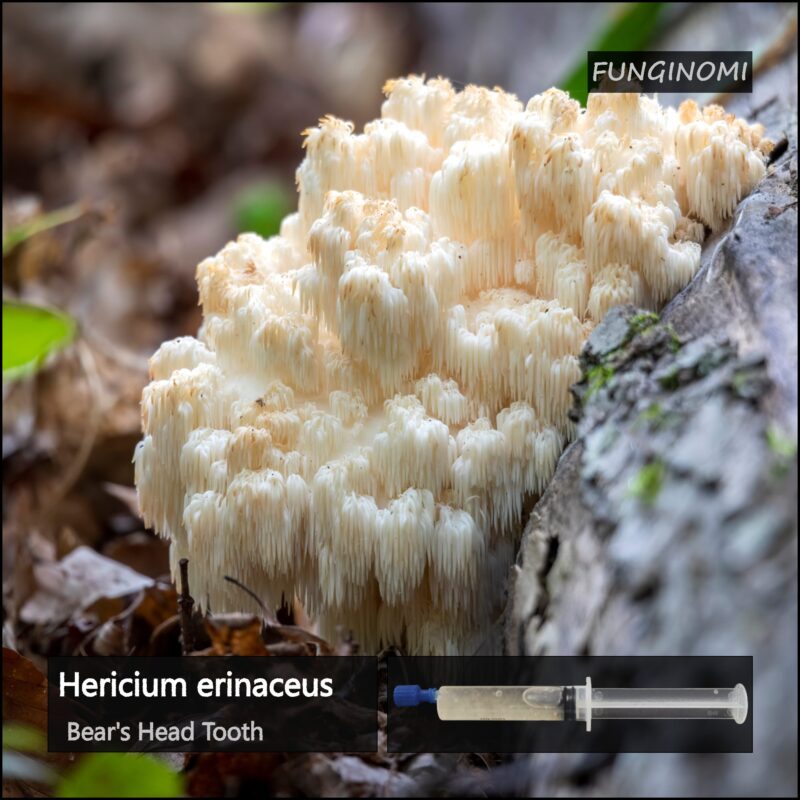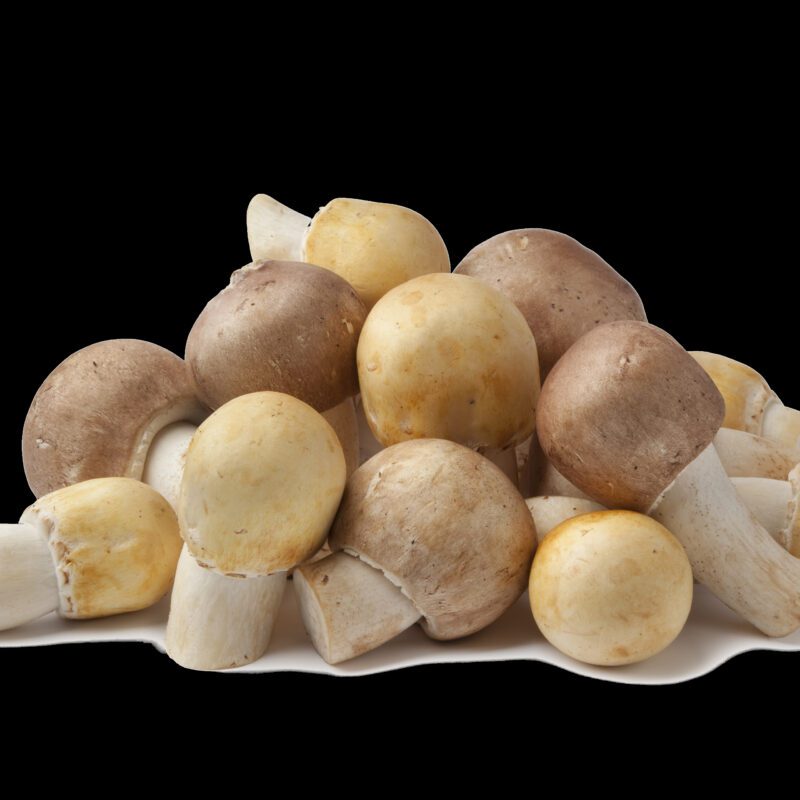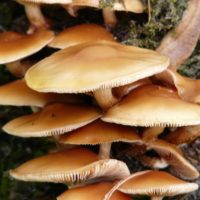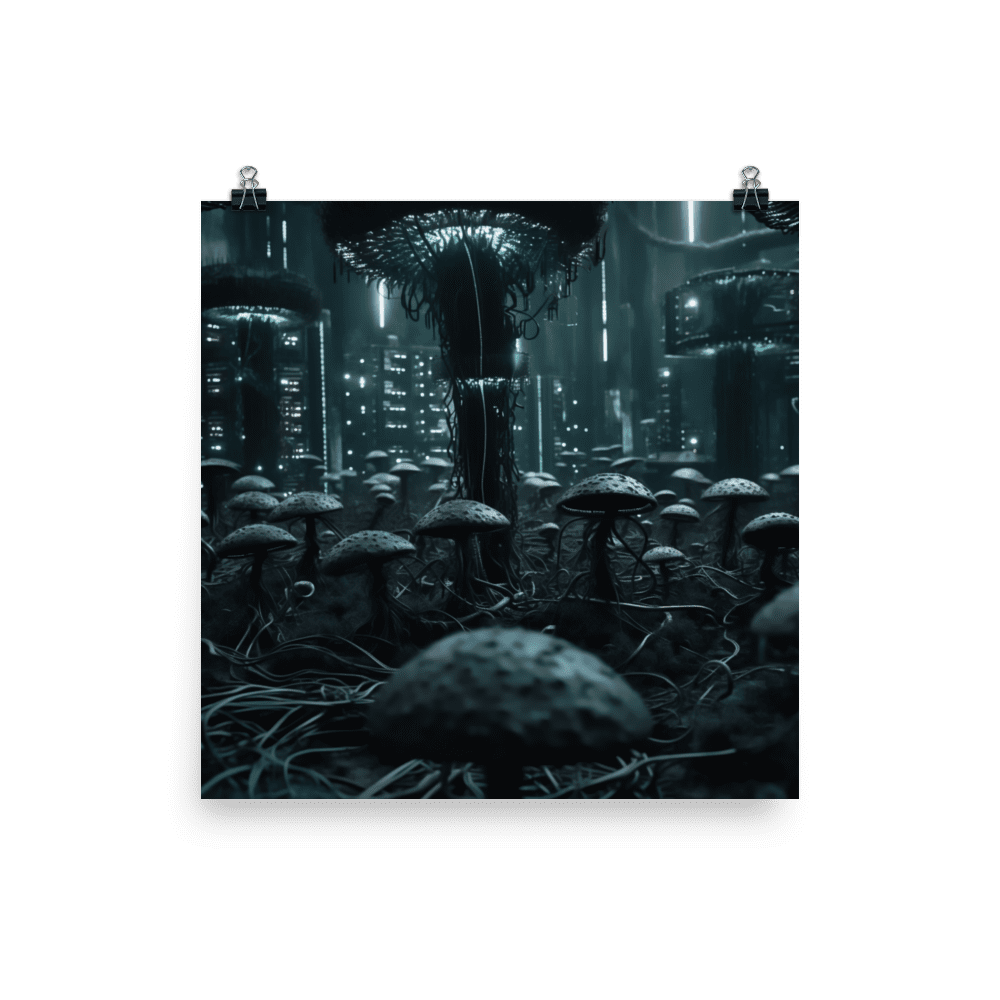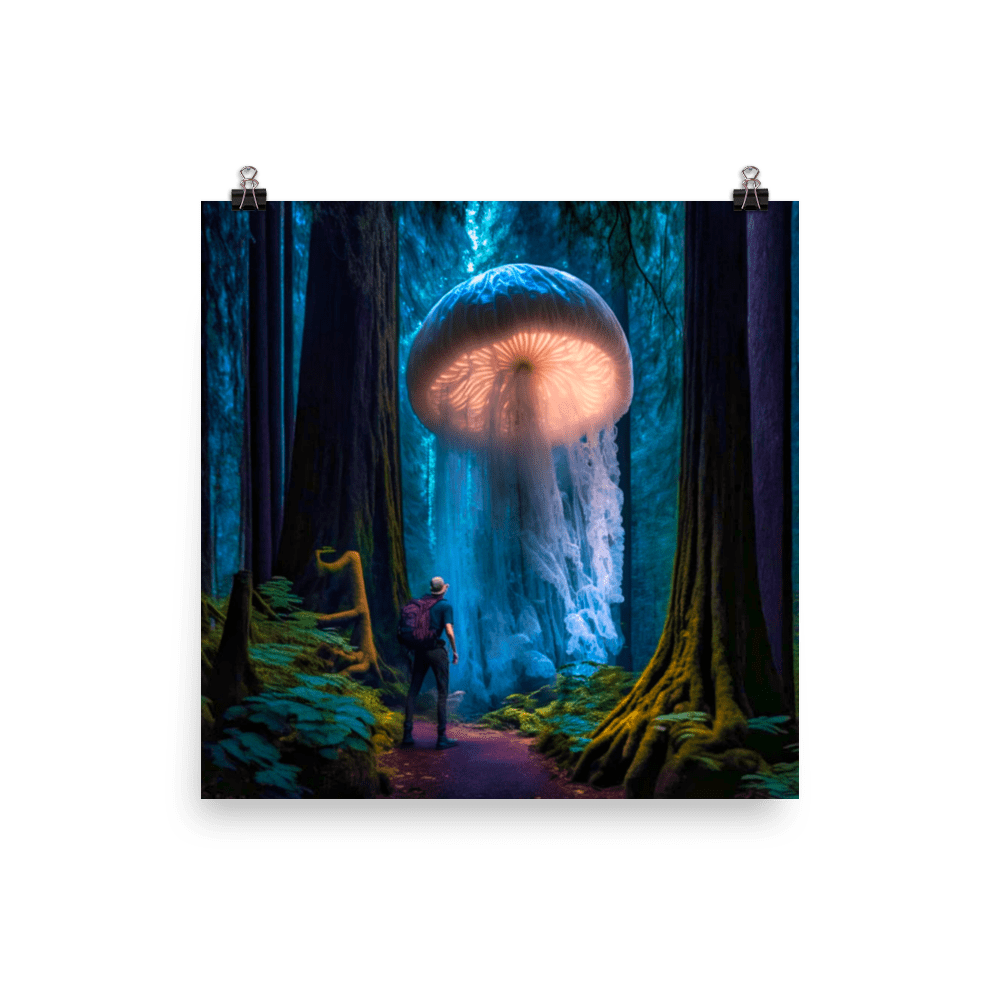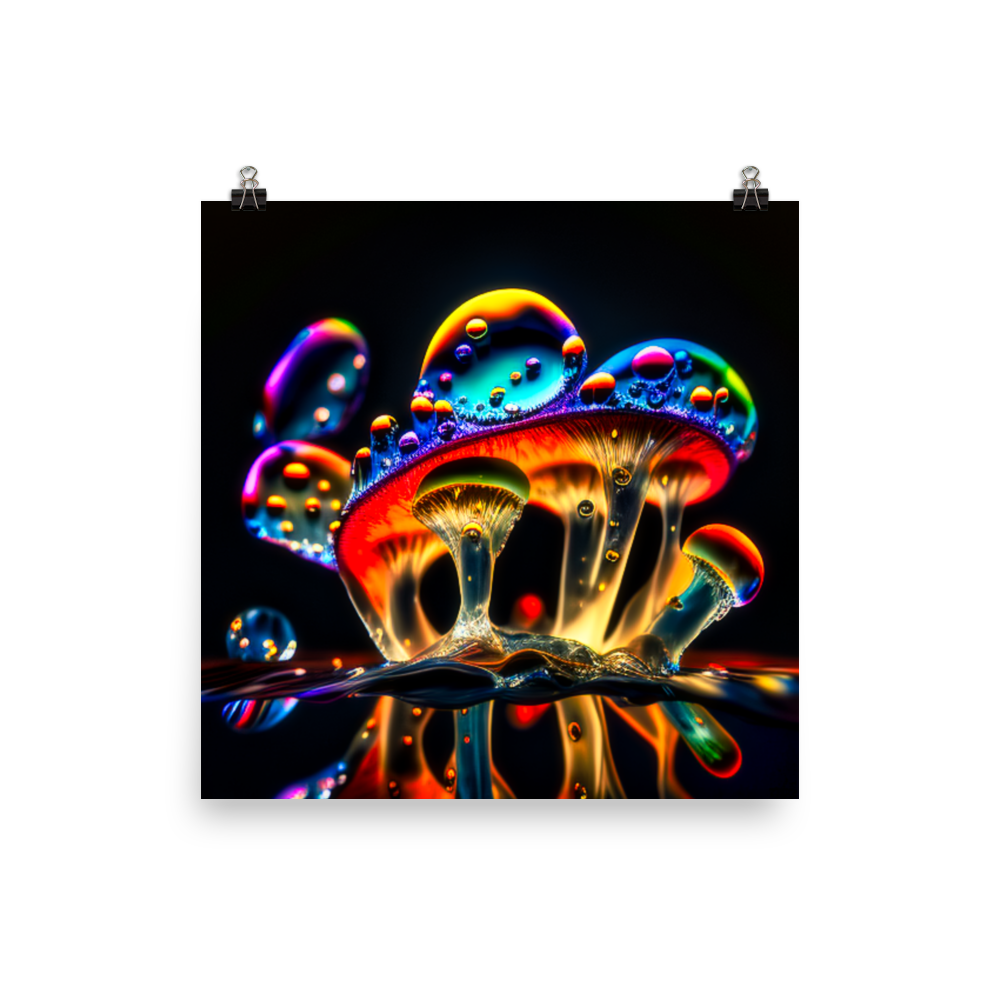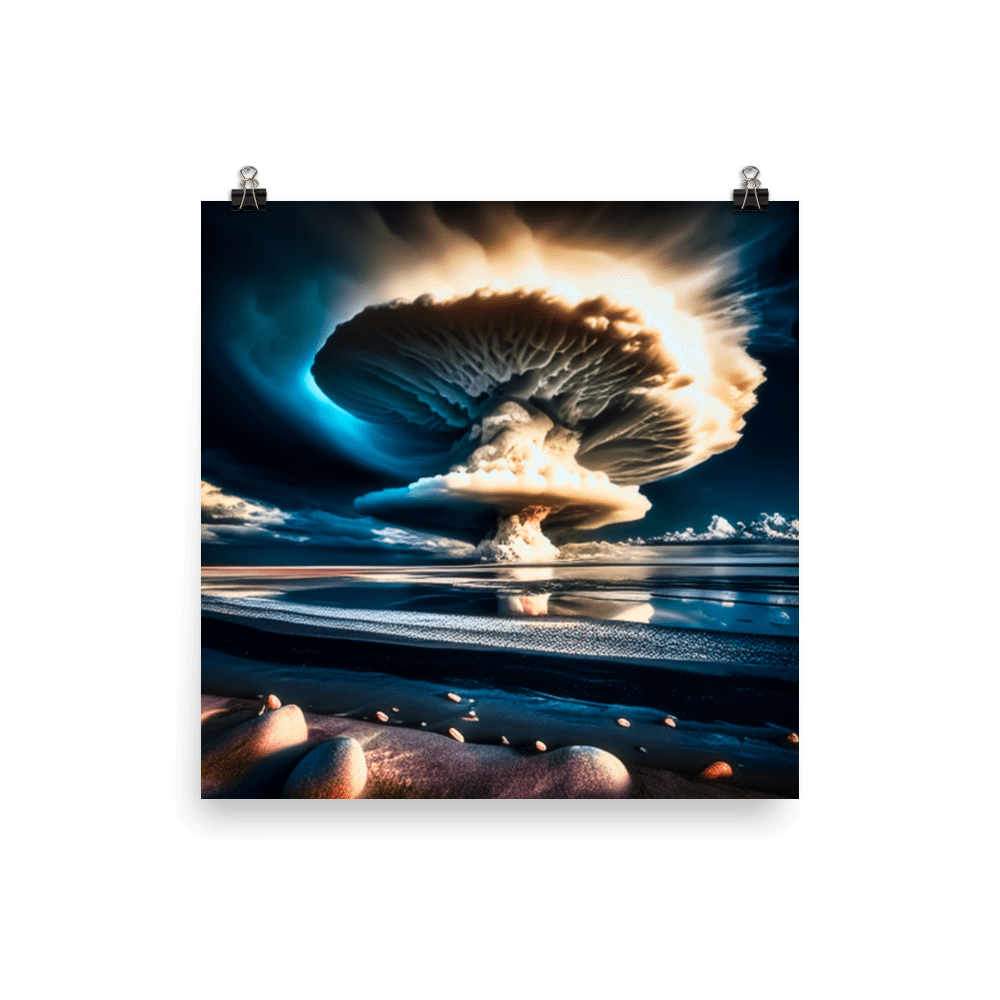A Comprehensive Guide to Mushroom Cultivation Materials: Everything You Need to Know
Introduction to Mushroom Cultivation Materials

The topic of mushroom cultivation and the importance of choosing the right materials, an introduction
Welcome to our comprehensive guide on mushroom cultivation materials! Whether you’re a seasoned gardener or a curious beginner, this guide is designed to equip you with all the essential knowledge and materials needed to successfully grow your own mushrooms. By understanding the basics of mushroom cultivation and selecting the right materials, you’ll be well on your way to harvesting a bountiful crop of delicious fungi.
Growing your own mushrooms offers numerous benefits. Not only does it provide a rewarding and sustainable hobby, but it also allows you to enjoy the freshest, most flavorful mushrooms right from your backyard or indoor space. Plus, cultivating mushrooms can be a cost-effective alternative to purchasing them from stores.
In this guide, we will delve into the various materials crucial for successful mushroom cultivation. From selecting the perfect substrate to choosing the right spawn and containers, we will cover every aspect necessary for creating an optimal growing environment. Additionally, we will explore the importance of climate control and provide an overview of the essential tools and equipment you’ll need to ensure a thriving mushroom harvest.
Whether you’re interested in growing culinary mushrooms for your favorite recipes or exploring the fascinating world of medicinal mushrooms, this guide will serve as your go-to resource. Get ready to embark on an exciting journey into the realm of mushroom cultivation materials, where you’ll discover the secrets to nurturing these remarkable fungi. Let’s dive in and explore the wonderful world of mushroom cultivation materials together!
Benefits of using high-quality materials for successful mushroom cultivation
Using high-quality materials for successful mushroom cultivation offers a range of benefits:
-
Optimal Growth and Yield: High-quality materials provide the ideal conditions for mushrooms to thrive. They offer the necessary nutrients, moisture retention, and a balanced pH level, promoting healthy mycelium growth and maximizing your yield.
-
Consistent and Reliable Results: When you invest in quality materials, you can expect consistent and reliable outcomes. Quality substrates, spawn, and containers ensure uniform colonization, minimizing the risk of contamination and increasing the chances of a successful harvest.
-
Enhanced Disease Resistance: High-quality materials are often produced under stringent quality control measures, reducing the risk of introducing pathogens or contaminants to your growing environment. This enhances the overall disease resistance of your mushroom crop, minimizing potential setbacks and losses.
-
Improved Efficiency and Time Savings: Premium materials are typically formulated and prepared to be ready-to-use, saving you time and effort in the preparation process. They are often optimized for specific mushroom species, allowing you to streamline your cultivation process and achieve efficient growth.
-
Higher Nutritional Value and Flavor: Using superior materials can have a direct impact on the quality of your harvested mushrooms. They provide optimal nutrition and environmental conditions, resulting in mushrooms with enhanced flavor profiles, textures, and nutritional value.
-
Long-Term Cost Savings: While high-quality materials may require a slightly higher upfront investment, they often yield better results and reduce the risk of failure. This can save you money in the long run by minimizing crop losses and the need for frequent replacements.
By choosing high-quality materials for your mushroom cultivation endeavors, you set a solid foundation for success, enabling you to enjoy abundant harvests of healthy, flavorful mushrooms.
The potential challenges and how selecting the right materials can help overcome them
When venturing into mushroom cultivation, there are potential challenges that you may encounter. However, selecting the right materials can significantly help overcome these challenges. Here’s how:
-
Contamination Prevention: Contamination is a common challenge in mushroom cultivation, as it can hinder the growth and development of your mushrooms. By choosing high-quality materials, such as sterilized substrates and clean spawn, you can minimize the risk of contamination and create a more favorable environment for your mushrooms to flourish.
-
Suboptimal Growth Conditions: Mushrooms require specific environmental conditions to thrive, including temperature, humidity, and airflow. By investing in quality materials designed for proper climate control, such as humidity tents or climate-controlled containers, you can create an ideal growing environment, ensuring optimal growth conditions for your mushrooms.
-
Inconsistent Yield: Achieving a consistent yield can be a challenge in mushroom cultivation. However, selecting the right substrates, spawn, and containers can greatly improve your chances of obtaining consistent and abundant harvests. High-quality materials provide the necessary nutrients and support for mycelium colonization, leading to healthier and more productive mushroom growth.
-
Nutrient Imbalance: Maintaining the right nutrient balance is crucial for mushroom cultivation. By using quality materials, you can ensure that the substrates and spawn you choose are rich in essential nutrients, providing the necessary fuel for robust mushroom development. This helps prevent nutrient deficiencies or imbalances that can impede mushroom growth.
-
Waste Reduction: Sustainable mushroom cultivation involves minimizing waste and maximizing resource utilization. Selecting sustainable materials, such as biodegradable containers or reusable equipment, can contribute to waste reduction and promote a more environmentally friendly approach to cultivation.
By carefully selecting high-quality materials for your mushroom cultivation endeavors, you can overcome potential challenges, increase your chances of success, and enjoy a fruitful and rewarding mushroom-growing experience.
Types of Mushrooms and Their Specific Material Requirements
Overview of different types of mushrooms commonly cultivated
-
-
Button Mushrooms (Agaricus bisporus): The most widely cultivated mushrooms, known for their mild flavor and versatile culinary uses. They have a white to light brown cap and a firm texture.
-
Shiitake Mushrooms (Lentinula edodes): Originating from East Asia, shiitake mushrooms have a savory flavor and a meaty texture. They are highly valued for their culinary and medicinal properties.
-
Oyster Mushrooms (Pleurotus species): Oyster mushrooms have a delicate and mild flavor. They come in various colors, including white, gray, and yellow. They are relatively easy to cultivate and grow well on a variety of substrates.
-
Enoki Mushrooms (Flammulina velutipes): Enoki mushrooms have long, slender stems and tiny white caps. They have a crisp texture and a delicate, slightly sweet taste. They are often used in Asian cuisines and are popular for their unique appearance.
-
Lion’s Mane Mushrooms (Hericium erinaceus): Lion’s Mane mushrooms have a distinctive appearance with cascading spines. They have a delicate, seafood-like flavor and a texture resembling crab or lobster meat. They are also valued for their potential health benefits.
-
Portobello Mushrooms (Agaricus bisporus): Portobello mushrooms are matured versions of button mushrooms. They have a large, brown cap and a rich, meaty flavor. They are often used as a meat substitute in various dishes.
-
Maitake Mushrooms (Grifola frondosa): Maitake mushrooms, also known as “hen of the woods,” have a robust flavor and a frilly appearance. They are highly regarded for their culinary and potential medicinal properties.
In addition to these cultivated mushrooms, there are different types of magic mushrooms that contain the psychoactive compound psilocybin. Some commonly cultivated species of magic mushrooms include:
- Psilocybe cubensis: One of the most widely cultivated magic mushroom species. It has a distinctively shaped cap with a dark-colored spore print.
- Psilocybe semilanceata: Also known as “liberty cap,” it has a small, cone-shaped cap and is commonly found in grassy areas.
- Psilocybe cyanescens: Known for its potency, it has a brownish cap and a mycena-like appearance.
Please note that the cultivation and use of magic mushrooms, or any other psychedelic substances, may be subject to legal restrictions in certain jurisdictions. It is important to research and comply with the laws and regulations of your specific location before engaging in the cultivation or use of magic mushrooms.
-
Specific material requirements for each type, such as substrate, containers and growing environment
-
Button Mushrooms:
- Substrate: Button mushrooms thrive on composted materials such as straw, horse manure, and gypsum. The substrate needs to be pasteurized or sterilized to prevent contamination.
- Containers: Button mushrooms are typically grown in trays or containers filled with the prepared substrate. The containers should have drainage holes for proper moisture control.
- Growing Environment: Button mushrooms prefer a temperature range of 55-65°F (13-18°C) and high humidity levels of around 80-90%. They are commonly grown indoors in controlled environments.
-
Shiitake Mushrooms:
- Substrate: Shiitake mushrooms are traditionally cultivated on logs, especially hardwood logs like oak or beech. The logs need to be fresh or partially decomposed.
- Containers: In addition to log cultivation, shiitake mushrooms can also be grown on supplemented sawdust blocks or straw-filled bags.
- Growing Environment: Shiitake mushrooms require a temperature range of 60-75°F (15-24°C) and high humidity levels around 80%. They are often grown outdoors or in shaded areas.
-
Oyster Mushrooms:
- Substrate: Oyster mushrooms have a wide range of substrate options, including straw, coffee grounds, sawdust, or a combination of these materials. The substrate needs to be sterilized or pasteurized.
- Containers: Oyster mushrooms can be grown in bags, buckets, or trays filled with the prepared substrate.
- Growing Environment: Oyster mushrooms thrive in temperatures between 65-75°F (18-24°C) and high humidity levels around 85%. They can be grown indoors or outdoors with proper ventilation.
-
Enoki Mushrooms:
- Substrate: Enoki mushrooms are typically grown on a mixture of hardwood sawdust and wheat straw. The substrate needs to be sterilized.
- Containers: Enoki mushrooms are commonly cultivated in bottles or jars filled with the prepared substrate. The containers should have small air holes for proper aeration.
- Growing Environment: Enoki mushrooms prefer cooler temperatures around 45-55°F (7-13°C) and moderate humidity levels. They are often grown in a controlled indoor environment.
-
Lion’s Mane Mushrooms:
- Substrate: Lion’s Mane mushrooms can be cultivated on hardwood sawdust, supplemented with bran or other nutrients. The substrate needs to be sterilized.
- Containers: Lion’s Mane mushrooms are often grown in bags or containers filled with the prepared substrate.
- Growing Environment: Lion’s Mane mushrooms prefer temperatures between 65-75°F (18-24°C) and high humidity levels around 85%. They can be grown indoors or outdoors with proper ventilation.
-
Portobello Mushrooms:
- Substrate: Portobello mushrooms are grown on composted materials similar to button mushrooms, including straw, horse manure, and gypsum. The substrate needs to be pasteurized or sterilized.
- Containers: Portobello mushrooms are typically grown in trays or containers filled with the prepared substrate.
- Growing Environment: Portobello mushrooms prefer temperatures around 65-75°F (18-24°C) and high humidity levels around 85%. They are commonly grown indoors in controlled environments.
For magic mushrooms, including different species such as Psilocybe cubensis, Psilocybe semilanceata, and Psilocybe cyanescens, the material requirements may vary slightly depending on the species. However, common materials used for magic mushroom cultivation include grain-based substrates like rye berries or brown rice, mason jars or growing bags for colonization, and a controlled environment with specific temperature, humidity, and light conditions conducive to their growth.
Remember to ensure that you thoroughly research the specific material requirements for the mushrooms you intend to cultivate to achieve the best possible results.
The importance of matching the materials to the specific mushroom species for optimal results
-
Substrate Compatibility: Different mushrooms have specific substrate preferences. Using the appropriate substrate ensures that the mushrooms have the necessary nutrients for growth and development. For example, button mushrooms thrive on composted materials like straw and manure, while shiitake mushrooms prefer hardwood logs. Providing the correct substrate enhances the overall health and yield of the mushrooms.
-
Nutrient Availability: Each mushroom species has distinct nutritional requirements. Selecting the right materials ensures that the mushrooms have access to the essential nutrients they need for proper development. Using compatible materials maximizes nutrient availability and promotes robust mushroom growth, resulting in higher yields and better-quality harvests.
-
Contamination Prevention: Using suitable materials reduces the risk of contamination during cultivation. Different mushrooms have varying susceptibilities to contaminants, such as molds or bacteria. By choosing materials that are appropriate for the specific mushroom species, you create an environment that minimizes the chances of unwanted organisms interfering with mushroom growth. This increases the likelihood of a successful and healthy harvest.
-
Environmental Adaptability: Mushroom species have specific temperature, humidity, and light requirements. By selecting the right materials, such as containers or growing environments, you can create an environment that closely matches the preferred conditions of the mushroom species. This promotes optimal growth and fruiting, leading to more abundant and high-quality mushroom production.
-
Species-Specific Characteristics: Each mushroom species has unique growth patterns, fruiting behaviors, and responses to different environmental factors. By matching the materials to the specific mushroom species, you ensure that the cultivation process is tailored to their specific needs. This level of customization increases the chances of successful cultivation and allows you to optimize the growing conditions for maximum yield and quality.
Remember, paying attention to the specific material requirements for each mushroom species is essential for creating an environment where they can thrive. By providing the right substrates, containers, and growing conditions, you set the stage for successful cultivation and a rewarding mushroom-growing experience.
Substrate Materials for Mushroom Cultivation
Discussion about various substrate materials used in mushroom cultivation, such as straw, sawdust, wood chips and compost
-
Straw: Widely used for mushrooms like oyster and shiitake, straw is affordable, easily available, and simple to work with. Prepare it by chopping into smaller pieces, soaking in water, and pasteurizing or sterilizing before inoculation.
-
Sawdust: Popular for lion’s mane and enoki mushrooms, sawdust—especially hardwood—can be mixed with additives like bran or gypsum to enhance nutrition. Sterilize or pasteurize the sawdust before use as a substrate.
-
Wood Chips: Often used for shiitake mushrooms, wood chips from hardwood trees create a nutrient-rich environment. Partially decompose or age the chips before use to eliminate compounds inhibitory to mushroom growth.
-
Compost: Suitable for button and portobello mushrooms, compost is a nutrient-rich substrate. Create it by decomposing organic materials like straw, manure, and agricultural waste. Pasteurize or sterilize the compost prior to inoculation.
Each substrate material offers unique advantages and supports the growth of different mushroom species. Experimentation and understanding the specific requirements of your chosen mushrooms will help determine the most suitable substrate for successful cultivation.
Characteristics of each substrate and its suitability for different types of mushrooms
-
Straw: Straw is a versatile substrate material with several key characteristics. It has good moisture retention properties and provides a suitable structure for mycelium colonization. Straw is commonly used for mushrooms like oyster and shiitake. These mushroom species thrive on the cellulose-rich composition of straw and its ability to support rapid mycelial growth.
-
Sawdust: Sawdust is finely ground wood material that offers unique benefits as a substrate. It has a high surface area, promoting efficient colonization by mushroom mycelium. Sawdust is well-suited for species such as lion’s mane and enoki. These mushrooms can efficiently break down the lignin in sawdust, extracting nutrients for their growth and development.
-
Wood Chips: Wood chips are larger pieces of wood, typically derived from hardwood trees. They provide a sturdy substrate structure and ample space for mycelium to grow. Wood chips are commonly used for shiitake mushrooms, as they offer a long-lasting substrate that supports the gradual decomposition required for successful fruiting.
-
Compost: Compost is a nutrient-rich substrate material created through the decomposition of organic matter. It offers a wide range of nutrients essential for mushroom growth. Compost is suitable for species like button and portobello mushrooms. These mushrooms benefit from the nutrient diversity and balanced composition of compost, leading to robust fruiting and desirable mushroom characteristics.
When selecting a substrate material, consider the specific requirements of your target mushroom species. Pay attention to factors such as moisture retention, nutrient content, and structural integrity. Matching the substrate characteristics to the preferences of the mushroom species will optimize their growth and maximize your chances of a successful harvest.
Tips for preparing and sterilizing the substrate material to promote healthy mushroom growth
-
Material Selection: Choose high-quality substrate materials, such as fresh straw, hardwood sawdust, or well-aged wood chips. Quality materials provide a better foundation for mycelium colonization and fruiting.
-
Cleaning and Soaking: If using straw or wood chips, clean them to remove debris or contaminants. Soak the substrate material in water for several hours or overnight to hydrate it and ensure even moisture distribution.
-
Pasteurization: Pasteurization is a common method to sterilize substrate materials without fully sterilizing them. This helps control potential contaminants while preserving beneficial microorganisms. To pasteurize, heat the substrate to around 160°F (71°C) for an extended period, usually 1-2 hours.
-
Pressure Sterilization: For certain mushroom species or when complete sterilization is necessary, pressure sterilization is recommended. Place the substrate material in sealed containers like jars or bags and subject them to high pressure and temperature. Follow specific guidelines for each substrate material to achieve proper sterilization.
-
Cooling and Draining: After pasteurization or sterilization, allow the substrate material to cool down completely. Drain any excess moisture to reach the desired moisture content suitable for your chosen mushroom species.
-
Inoculation Timing: Inoculate the substrate material with mushroom spawn or mycelium at the appropriate temperature and in a clean environment. Follow the recommended procedures for inoculation specific to the mushroom species you are cultivating.
-
Incubation and Colonization: Place the inoculated substrate in a controlled environment with suitable temperature and humidity for mycelium colonization. Ensure proper air circulation while protecting it from contamination. Monitor and maintain ideal conditions for the mycelium to fully colonize the substrate.
By following these tips, you can effectively prepare and sterilize substrate material, creating an environment conducive to healthy mushroom growth. Remember to maintain cleanliness throughout the process and pay attention to the specific requirements of your chosen mushroom species for optimal results.
Containers and Growing Systems
Different types of containers used in mushroom cultivation, such as trays, bags and jars
-
Trays: Trays are shallow, flat containers that provide a suitable surface for mushroom fruiting. They are often made of plastic or metal and come in various sizes. Trays are ideal for cultivating mushrooms such as oyster mushrooms, which benefit from a wide fruiting surface. They allow for easy maintenance, monitoring, and harvesting of mushrooms.
-
Bags: Bags, typically made of plastic or specialized mushroom-growing bags, are a popular choice for cultivating mushrooms like shiitake and lion’s mane. These bags are filled with the prepared substrate material and sealed to create a controlled environment for mushroom growth. Bags offer advantages such as scalability, efficient use of space, and the ability to cultivate mushrooms in vertical stacks.
-
Jars: Jars, usually made of glass or plastic, are commonly used for growing mushrooms like the psychedelic Psilocybe cubensis variety. They are filled with a substrate, such as grain or rice, which is inoculated with mushroom spores or mycelium. The jars are then sealed with lids fitted with breathable filters or covered with foil. Jars provide a compact and self-contained environment for colonization and fruiting of magic mushrooms.
-
Logs: While not technically containers, logs serve as a natural medium for cultivating certain types of mushrooms, such as shiitake and maitake. These mushrooms are cultivated by inoculating logs with mushroom spawn or mycelium. The logs are typically made of hardwood, such as oak or birch, and require specific conditions for colonization and fruiting.
When selecting containers for mushroom cultivation, consider the requirements of your chosen mushroom species, the available space, and your preferred cultivation method. Each type of container has its own advantages and considerations, so choose the one that best suits your needs and ensures successful mushroom growth.
Pros and cons of each container type, considering factors like ventilation, moisture retention and ease of handling
-
Trays:
- Pros:
- Good ventilation: Trays typically have open tops or perforations, allowing for adequate air circulation and oxygen exchange.
- Easy moisture control: Trays offer relatively good moisture retention and allow for easy monitoring and adjustment of moisture levels.
- Convenient handling: Trays are easy to handle, move, and harvest from due to their flat and sturdy design.
- Cons:
- Limited substrate volume: Trays may have limited depth, which can restrict the amount of substrate and subsequently affect mushroom yield.
- Risk of contamination:
- Pros:
-
Bags:
- Pros:
- Controlled environment: Bags provide a sealed environment that helps maintain proper moisture levels and reduces the risk of contamination.
- Efficient space utilization: Bags allow for vertical stacking, maximizing the use of available space.
- Easy handling and harvesting: Bags can be easily handled and harvested by cutting open a section or removing the contents entirely.
- Cons:
- Limited ventilation: Bags may have limited airflow, which can impact oxygen exchange and potentially lead to issues like excessive carbon dioxide buildup.
- Moisture retention challenges: It can be more challenging to maintain optimal moisture levels in bags, requiring careful monitoring and adjustment.
- Pros:
-
Jars:
- Pros:
- Controllable environment: Jars provide a self-contained environment that can be easily monitored and controlled.
- Suitable for small-scale cultivation: Jars are ideal for smaller mushroom cultivation projects or when space is limited.
- Easy observation: Transparent jars allow for visual monitoring of mycelial growth and fruiting development.
- Cons:
- Limited substrate volume: Jars have a small capacity, which may restrict the potential yield of mushrooms.
- Limited ventilation: Jars typically have limited airflow, which can affect oxygen exchange and may require additional measures for gas exchange.
- Pros:
Considering these pros and cons, it’s important to choose the container type that aligns with the specific requirements of your mushroom species and cultivation goals. Factors such as ventilation, moisture retention, and ease of handling should be taken into account to ensure successful mushroom cultivation.
Advanced growing systems like shelves, racks, and automated setups for larger-scale cultivation
-
Shelves:
- Shelves provide a convenient and space-efficient solution for larger-scale mushroom cultivation.
- By utilizing multiple levels of shelves, growers can maximize the use of vertical space.
- Shelves are often made of sturdy materials like metal or plastic and can support the weight of multiple trays or containers.
- They offer easy access for maintenance, monitoring, and harvesting of mushrooms.
- Good air circulation and ventilation are important when using shelves to ensure optimal mushroom growth.
-
Racks:
- Racks are similar to shelves but often have a modular design that allows for easy expansion and customization.
- These systems are commonly used in commercial mushroom cultivation facilities.
- Racks are designed to accommodate large quantities of trays or bags, making them ideal for high-volume production.
- They provide efficient use of space and enable streamlined workflows for cultivation and harvesting.
- Adequate ventilation and moisture control are crucial in rack systems to prevent issues such as excessive humidity or stagnant air.
-
Automated setups:
- Automated setups incorporate technology to streamline and optimize the cultivation process.
- They often include features such as environmental control systems, automated watering and misting, and monitoring sensors.
- These systems offer precise control over factors like temperature, humidity, and lighting.
- They reduce manual labor and ensure consistent growing conditions, which can result in higher yields and improved efficiency.
- Automated setups are commonly used in large-scale commercial operations where precision and productivity are paramount.
Implementing advanced growing systems like shelves, racks, and automated setups can significantly enhance the productivity and efficiency of larger-scale mushroom cultivation. It’s important to consider factors such as ventilation, moisture control, and automation capabilities when choosing and implementing these systems for optimal results.
Environmental Control and Monitoring
The significance of maintaining proper environmental conditions for successful mushroom cultivation
Maintaining proper environmental conditions is of utmost significance for successful mushroom cultivation. The following points highlight the importance of maintaining optimal conditions:
-
Temperature: Different mushroom species have specific temperature requirements for successful growth and fruiting. Maintaining the appropriate temperature range ensures proper development of mycelium and formation of fruiting bodies. Deviations from the optimal temperature can result in slow growth, poor yield, or susceptibility to diseases.
-
Humidity: Mushrooms thrive in high humidity environments. Adequate moisture levels promote mycelial growth, fruiting body formation, and prevent drying out. Insufficient humidity can hinder the development of mushrooms, while excessive moisture can lead to issues like fungal contamination. Maintaining the right humidity level is crucial for successful cultivation.
-
Air Exchange: Mushrooms require a sufficient exchange of fresh air to facilitate proper respiration and prevent the buildup of harmful gases. Good air circulation helps remove carbon dioxide and supply oxygen, ensuring healthy growth and development. Stagnant air or poor ventilation can lead to suboptimal results, including slower growth, lower yields, and increased risk of contamination.
-
Lighting: While some mushrooms benefit from indirect or diffused light, others require darkness for fruiting. Understanding the light requirements of specific mushroom species is crucial for providing the appropriate lighting conditions. Proper lighting helps regulate biological processes, including fruiting body formation, while improper lighting can disrupt the growth cycle.
-
Sanitation: Maintaining a clean and sanitized environment is vital for preventing contamination and diseases. Regular cleaning of cultivation areas, equipment, and tools helps minimize the presence of harmful microorganisms and ensures a healthy growing environment for mushrooms.
By carefully controlling and maintaining these environmental conditions, mushroom cultivators can optimize growth, ensure healthy development, and maximize yields. Monitoring and adjusting these factors according to the specific requirements of the mushroom species being cultivated are key to achieving successful results in mushroom cultivation.
Temperature, humidity, light and airflow requirements
-
Temperature: Mushrooms have specific temperature requirements depending on the species. Maintaining the appropriate temperature is crucial for optimal growth and fruiting. Some mushrooms prefer cooler temperatures, around 55-65°F (13-18°C), while others thrive in warmer conditions, around 70-75°F (21-24°C). Deviations from the ideal temperature range can negatively impact mycelial growth, fruiting body formation, and overall yield.
-
Humidity: Humidity plays a vital role in mushroom cultivation. Most mushrooms require high humidity levels to promote proper growth and development. Generally, the humidity should be maintained between 80% and 90%. Adequate moisture prevents drying out of the substrate and helps with the formation of fruiting bodies. Regular misting or using a humidifier can help maintain optimal humidity levels.
-
Light: Light requirements vary among different mushroom species. Some mushrooms prefer indirect light, while others thrive in darkness. For mushrooms that require light, providing a low-intensity light source, such as fluorescent or LED lights, is sufficient. Light exposure can influence the timing of fruiting, direction of growth, and development of pigmentation in mushrooms. It’s essential to research the specific light requirements for the mushrooms you are cultivating.
-
Airflow: Proper airflow and ventilation are crucial for successful mushroom cultivation. Good airflow helps remove carbon dioxide and replenish oxygen, promoting healthy respiration and preventing the accumulation of harmful gases. It also helps prevent stagnant air and reduces the risk of contamination. Using fans or ensuring adequate openings for air exchange can improve airflow within the cultivation area.
Maintaining the optimal temperature, humidity, light, and airflow conditions is essential for the healthy growth and development of mushrooms. Each mushroom species has its specific requirements, so it’s crucial to research and understand the needs of the mushrooms you are cultivating. By providing the right environmental conditions, you can maximize yields and achieve successful mushroom cultivation.
Tools and equipment for monitoring and controlling these factors, such as thermometers, hygrometers and ventilation systems
-
Thermometers: Thermometers are essential tools for monitoring the temperature within the cultivation area. They help ensure that the temperature remains within the optimal range for the specific mushroom species being grown. Digital thermometers are commonly used as they provide accurate readings and may have additional features like minimum and maximum temperature recording.
-
Hygrometers: Hygrometers are used to measure the humidity levels in the growing environment. They help growers monitor and maintain the desired humidity range for successful mushroom cultivation. Hygrometers are available in various types, including analog and digital options, and can be placed in different areas of the cultivation space to assess overall humidity levels.
-
Ventilation Systems: Proper airflow and ventilation are crucial for maintaining optimal conditions. Ventilation systems, such as fans and exhaust systems, facilitate the exchange of fresh air, remove excess heat, and prevent the buildup of carbon dioxide and other harmful gases. These systems help regulate temperature, humidity, and gas levels within the cultivation area.
-
Humidifiers and Dehumidifiers: In environments where natural humidity levels are inadequate or excessive, humidifiers and dehumidifiers are used to adjust and control humidity levels. Humidifiers release moisture into the air to increase humidity, while dehumidifiers extract excess moisture from the air. These devices can be particularly useful in maintaining consistent humidity levels in controlled environments.
-
Lighting Systems: For mushrooms that require specific lighting conditions, lighting systems are used to provide the necessary light intensity and duration. This can include fluorescent lights, LED grow lights, or natural sunlight exposure. Timers or automated systems can be employed to regulate the lighting schedule and ensure consistent light cycles.
By utilizing these tools and equipment, mushroom cultivators can effectively monitor and control factors such as temperature, humidity, and airflow, creating an optimal growing environment for their mushrooms. This allows for better growth, development, and increased chances of successful cultivation.
Additional Materials and Tools
Covering supplementary materials and tools that aid mushroom cultivation, such as spawn, casing soil, pH testers and misting devices
-
Spawn: Spawn serves as the “seed” or inoculum for mushroom cultivation. It consists of mycelium, the vegetative part of the fungus, grown on a nutrient-rich substrate such as grain or sawdust. Spawn is used to introduce and establish the desired mushroom species into the cultivation substrate.
-
Casing Soil: Casing soil is a moisture-retaining layer applied on top of the substrate to create favorable conditions for fruiting. It helps regulate moisture levels, provides a microclimate for fruiting body formation, and protects the mycelium. Common casing materials include peat moss, vermiculite, and coco coir.
-
pH Testers: pH testers are used to measure the acidity or alkalinity of the substrate or casing soil. Maintaining the proper pH range is essential for mushroom growth. Most mushrooms prefer a slightly acidic to neutral pH. pH testers allow growers to monitor and adjust the pH levels to provide optimal conditions for mycelial growth and fruiting.
-
Misting Devices: Misting devices, such as handheld sprayers or automated misting systems, are used to provide humidity and moisture to the growing environment. Misting helps maintain the desired moisture levels in the substrate and casing soil, which is crucial for proper mycelial growth, primordia formation, and fruiting body development. Misting devices ensure consistent and controlled moisture distribution.
-
Sterilization Equipment: Sterilization equipment is essential to prevent contamination and ensure a clean growing environment. Autoclaves or pressure cookers are commonly used to sterilize the substrate, casing soil, and other materials. These devices apply heat and pressure to eliminate bacteria, fungi, and other unwanted microorganisms.
-
Growing Containers: Growing containers provide a controlled environment for mushroom cultivation. They can include trays, bags, or jars, depending on the cultivation method. Containers should be durable, heat-resistant, and allow for proper airflow and drainage.
By utilizing these supplementary materials and tools, mushroom cultivators can enhance their cultivation process, improve success rates, and achieve better yields. It is important to select high-quality materials and use them in accordance with the specific requirements of the mushroom species being cultivated.
The purpose and importance of each item and how it contributes to the cultivation process
-
Spawn: Spawn serves as the “seed” or inoculum for mushroom cultivation. It contains mycelium, which is responsible for the colonization of the substrate and eventual fruiting body formation. Using high-quality spawn ensures a strong and healthy mycelial network, leading to successful mushroom cultivation.
-
Casing Soil: Casing soil is applied to the substrate to create a microclimate that promotes fruiting body formation. It helps maintain moisture levels, provides a supportive layer for mushroom pinning and development, and protects the mycelium. Casing soil also contributes to the overall structure and health of the fruiting bodies.
-
pH Testers: pH testers are essential for monitoring and adjusting the acidity or alkalinity of the cultivation environment. Maintaining the proper pH range is crucial for optimal mycelial growth and fruiting. Different mushroom species have specific pH preferences, and pH testers help ensure that the substrate and casing soil provide the ideal pH conditions.
-
Misting Devices: Misting devices play a vital role in maintaining proper humidity levels within the growing environment. They provide a fine mist of water to keep the substrate and casing soil adequately moist. Proper moisture levels are essential for mycelial growth, primordia initiation, and the development of high-quality fruiting bodies.
-
Sterilization Equipment: Sterilization equipment is used to eliminate potential contaminants from the cultivation materials. Sterilizing the substrate, casing soil, and equipment helps create a clean and controlled environment, minimizing the risk of unwanted microorganisms competing with the desired mushrooms. It is crucial for successful and disease-free mushroom cultivation.
-
Growing Containers: Growing containers provide a suitable environment for mushroom cultivation. They offer a controlled space for the mycelium to colonize the substrate and for the fruiting bodies to develop. Properly selected containers with proper airflow and drainage contribute to maintaining the ideal growing conditions and help optimize the cultivation process.
By understanding the purpose and importance of these items, mushroom cultivators can effectively manage and manipulate the cultivation environment to create favorable conditions for mycelial growth and fruiting. Each item plays a crucial role in ensuring successful mushroom cultivation and maximizing yields.
Sourcing High-Quality Materials
Guidance on selecting reputable suppliers and vendors for mushroom cultivation materials
When it comes to sourcing high-quality materials for mushroom cultivation, it is crucial to choose reputable suppliers and vendors. Here are some guidelines to help you select the right ones:
-
Research: Conduct thorough research to identify reliable suppliers in the market. Look for suppliers with a proven track record and positive customer reviews. Quality should be your top priority when selecting materials.
-
Certifications and Standards: Check if the suppliers adhere to industry standards and have relevant certifications for their products. Certifications such as organic, sustainable, or food-grade indicate a commitment to quality and safety.
-
Product Range: Look for suppliers who offer a wide range of mushroom cultivation materials to cater to your specific needs. This may include substrate materials, spawn, casing soil, containers, and other essential items.
-
Material Specifications: Ensure that the suppliers provide detailed product specifications for each item. This includes information about the origin, quality, and composition of the materials. Pay attention to factors such as moisture content, particle size, and nutrient composition.
-
Customer Support: Choose suppliers who provide excellent customer support. They should be responsive to inquiries, provide guidance on material selection and usage, and offer assistance in case of any issues or concerns.
-
Shipping and Packaging: Consider the shipping and packaging practices of the suppliers. Check if they use appropriate packaging to ensure the materials reach you in good condition. Additionally, evaluate their shipping options, including costs, delivery times, and international shipping if needed.
-
Price and Value: While price is an important factor, it should not be the sole determining factor. Evaluate the value provided by the supplier, considering factors such as material quality, customer support, and overall reputation. Choosing a supplier solely based on price may compromise the quality of the materials.
-
Recommendations and Referrals: Seek recommendations from experienced mushroom cultivators or join online forums and communities related to mushroom cultivation. These platforms can provide valuable insights and recommendations for reputable suppliers.
By following these guidelines and selecting reputable suppliers, you can ensure that you source high-quality materials for your mushroom cultivation endeavors. Remember, investing in top-notch materials sets the foundation for successful and healthy mushroom growth.
Key considerations, such as material quality, reliability and customer reviews
When considering suppliers and vendors for mushroom cultivation materials, several key factors should be taken into account:
-
Material Quality: The quality of the materials is paramount for successful mushroom cultivation. Look for suppliers that offer high-quality products that meet industry standards. This includes substrate materials, spawn, casing soil, and any other materials you require. Quality materials contribute to healthy mycelial growth, robust fruiting, and overall productivity.
-
Reliability: Choose suppliers that have a reputation for reliability and consistency. They should have a proven track record of delivering materials on time and in the expected condition. Reliability ensures that you can consistently access the necessary materials to maintain your cultivation operations.
-
Customer Reviews and Feedback: Pay attention to customer reviews and feedback about the suppliers you are considering. Positive reviews are an indication of customer satisfaction and a reliable product. Look for feedback specifically related to material quality, consistency, and customer service. This information can provide valuable insights into the supplier’s performance and help you make an informed decision.
-
Supplier’s Track Record: Research the supplier’s track record in the industry. How long have they been in business? Do they have experience in supplying materials for mushroom cultivation? A supplier with a solid track record is more likely to have established relationships with reputable producers and manufacturers, ensuring consistent access to quality materials.
-
Customer Service and Support: Evaluate the supplier’s customer service and support. They should be responsive, knowledgeable, and able to address any queries or concerns you may have. Good customer service ensures that you can seek assistance whenever needed, and they can provide guidance on material selection and usage.
-
Availability and Inventory: Assess the supplier’s availability and inventory. Ensure that they can meet your demands consistently and have an adequate supply of materials. A supplier with a robust inventory ensures that you won’t face shortages or delays in obtaining the required materials.
-
Price and Cost-effectiveness: Consider the price of the materials offered by different suppliers. While it’s important to find competitive pricing, it’s equally crucial to consider the overall value provided. Evaluate the quality of the materials, reliability of the supplier, and the level of customer support to determine the cost-effectiveness.
By considering these factors, such as material quality, reliability, customer reviews, and supplier track record, you can make an informed decision when selecting suppliers for your mushroom cultivation materials. Remember that investing in high-quality materials from reliable sources contributes to the success of your cultivation endeavors.
Tips for comparing prices, shipping options and customer support
When comparing prices, shipping options, and customer support among different suppliers for mushroom cultivation materials, consider the following tips:
-
Compare Prices: Obtain price quotes from multiple suppliers to compare the cost of the materials you need. Take into account the quantity of materials included in the pricing to ensure a fair comparison. Remember that the lowest price may not always indicate the best value, so consider other factors as well.
-
Evaluate Shipping Options: Assess the shipping options provided by each supplier. Consider factors such as delivery times, shipping costs, and availability of international shipping if applicable. Additionally, review the supplier’s packaging practices to ensure that materials are well-protected during transit.
-
Consider Customer Support: Evaluate the level of customer support offered by each supplier. Look for suppliers who are responsive, knowledgeable, and readily available to assist with any inquiries or concerns you may have. Prompt and helpful customer support can greatly enhance your overall experience.
-
Read Customer Reviews: Take the time to read customer reviews and feedback regarding the suppliers you are considering. Look for comments specifically related to shipping, pricing, and customer support. This firsthand information can provide valuable insights into the experiences of other customers.
-
Check Return Policies: Review the return policies of each supplier. It’s important to understand their policies regarding damaged or incorrect items, as well as the process for returns or exchanges. A supplier with a fair and hassle-free return policy can provide peace of mind in case any issues arise.
-
Consider Additional Services: Some suppliers may offer additional services, such as bulk discounts, loyalty programs, or educational resources. Take these into consideration as they can add value to your purchasing experience.
-
Ask for Recommendations: Seek recommendations from fellow mushroom cultivators or participate in online forums and communities. Other growers can provide insights into their experiences with different suppliers, including pricing, shipping options, and customer support.
Remember that while price is important, it should not be the sole factor in your decision-making process. Consider the overall value, including material quality, shipping options, and customer support, to make an informed choice that aligns with your specific needs.
By following these tips, you can effectively compare prices, shipping options, and customer support among suppliers and make an informed decision when sourcing your mushroom cultivation materials.
Conclusion
Recap of the main points discussed throughout the guide
Throughout this comprehensive guide to mushroom cultivation materials, we have covered several key points. Let’s recap the main highlights:
-
Introduction: We introduced the guide, emphasizing the importance of using high-quality materials for successful mushroom cultivation.
-
Types of Mushrooms: We provided an overview of different types of mushrooms commonly cultivated, including culinary and medicinal varieties, as well as magic mushrooms.
-
Substrate Materials: We discussed various substrate materials used in mushroom cultivation, such as straw, sawdust, wood chips, and compost. We highlighted their characteristics and suitability for different mushroom species.
-
Container Types: We detailed different types of containers used in mushroom cultivation, such as trays, bags, jars, shelves, racks, and automated setups. We discussed the pros and cons of each type, considering factors like ventilation, moisture retention, and ease of handling.
-
Environmental Conditions: We emphasized the significance of maintaining proper environmental conditions for successful mushroom cultivation. This included temperature, humidity, light, and airflow requirements.
-
Tools and Equipment: We introduced tools and equipment for monitoring and controlling environmental factors, such as thermometers, hygrometers, and ventilation systems.
-
Supplementary Materials: We covered supplementary materials and tools that aid mushroom cultivation, such as spawn, casing soil, pH testers, and misting devices. We explained their purpose and importance in the cultivation process.
-
Sourcing High-Quality Materials: We provided guidance on selecting reputable suppliers and vendors for mushroom cultivation materials. We emphasized factors such as material quality, reliability, customer reviews, and supplier track record.
-
Price, Shipping, and Customer Support: We offered tips for comparing prices, shipping options, and customer support among different suppliers. We highlighted the importance of considering overall value rather than just focusing on price.
By following the information and recommendations in this guide, you will be well-equipped to select the right materials, maintain optimal conditions, and cultivate healthy and productive mushrooms. Remember, attention to material quality, environmental conditions, and sourcing from reliable suppliers are key factors for successful mushroom cultivation.
The importance of using appropriate materials to achieve successful mushroom cultivation
Using appropriate materials is crucial for achieving successful mushroom cultivation. Here’s why it’s so important:
-
Optimal Growth and Development: Different mushroom species have specific requirements for their growth and development. Using the appropriate materials, such as suitable substrates, containers, and casing soil, ensures that the mushrooms have the necessary nutrients, moisture, and support for optimal growth. When the materials match the specific needs of the mushroom species, you provide them with the best possible environment to thrive.
-
Healthy Mycelial Colonization: High-quality materials play a vital role in promoting healthy mycelial colonization. The mycelium, the vegetative part of the fungus, needs a nourishing substrate to spread and establish a robust network. By using quality substrates and spawn, you provide the mycelium with the necessary nutrients, allowing it to colonize the substrate effectively. This sets the stage for successful fruiting and mushroom production.
-
Productivity and Yield: The choice of materials significantly impacts the productivity and yield of your mushroom cultivation. Optimal materials help create the right conditions for prolific fruiting and abundant harvests. When the materials match the requirements of the mushroom species, you enhance the chances of achieving higher yields and maximizing your cultivation efforts.
-
Disease Prevention and Contamination Control: Using appropriate materials also contributes to disease prevention and contamination control. High-quality substrates and spawn reduce the risk of introducing harmful pathogens or contaminants into your mushroom cultivation environment. This helps safeguard the health of your mushrooms, minimizing the chances of diseases or failures that can hamper your cultivation efforts.
-
Consistency and Reliability: Reliable and appropriate materials ensure consistency in your cultivation process. When you consistently use the right materials, you establish a reliable routine and can replicate successful results. This is especially important if you are cultivating mushrooms for commercial purposes or in larger-scale operations, where consistency and reliability are essential for sustainability and profitability.
By understanding the importance of using appropriate materials and selecting high-quality options, you set yourself up for successful mushroom cultivation. Paying attention to the specific needs of different mushroom species, matching the materials to those requirements, and sourcing them from reputable suppliers are key steps towards achieving your desired outcomes in mushroom cultivation.
Apply the knowledge gained and start their own mushroom cultivation journey
Now that you have gained valuable knowledge about mushroom cultivation materials, it’s time to embark on your own mushroom cultivation journey. Don’t hesitate to apply what you’ve learned and get started. Here’s why you should take the leap:
-
Empowerment through Knowledge: By delving into this comprehensive guide, you have equipped yourself with essential information about substrates, containers, environmental conditions, and more. You now possess the knowledge necessary to make informed decisions and take confident steps towards successful mushroom cultivation.
-
Endless Possibilities: Mushroom cultivation offers a world of possibilities. Whether you’re interested in growing gourmet mushrooms for culinary delight, exploring the medicinal properties of certain species, or even cultivating magic mushrooms, the choice is yours. With the right materials and techniques, you can unlock the potential of various mushroom varieties and their unique benefits.
-
Health and Wellness: Cultivating your own mushrooms allows you to enjoy the freshness, nutritional value, and flavor of homegrown produce. Incorporating mushrooms into your diet can enhance your overall health and wellness, thanks to their rich array of vitamins, minerals, and medicinal properties.
-
Sustainable and Eco-Friendly: Mushroom cultivation is a sustainable and environmentally friendly practice. By growing your own mushrooms, you reduce your reliance on commercially farmed varieties that may involve long transportation distances and excess packaging. Additionally, mushroom cultivation often utilizes organic waste materials as substrates, contributing to the circular economy and reducing waste.
-
Creative and Rewarding: Cultivating mushrooms is a creative and rewarding endeavor. As you witness the growth and development of your mushroom crop, you’ll experience a sense of accomplishment and satisfaction. You can experiment with different techniques, explore new species, and even develop your own unique cultivation methods over time.
-
Connection with Nature: Mushroom cultivation allows you to connect with nature in a unique way. You’ll gain a deeper understanding of the fascinating world of fungi, their symbiotic relationships, and their vital role in the ecosystem. Cultivating mushrooms provides an opportunity to appreciate the wonders of nature and cultivate a closer relationship with the environment.
-
Community and Sharing: Engaging in mushroom cultivation opens the door to a vibrant community of fellow cultivators, enthusiasts, and experts. Join online forums, attend workshops, or connect with local mushroom clubs to share experiences, exchange knowledge, and learn from others. The community aspect of mushroom cultivation adds an enriching dimension to your journey.
So, seize the moment and apply the knowledge you’ve gained. Gather your chosen materials, set up your cultivation space, and embark on your mushroom cultivation adventure. Remember, each step you take brings you closer to the joys and rewards of nurturing your own mushrooms. Enjoy the process, learn from the challenges, and savor the fruits of your labor. Happy cultivating!


